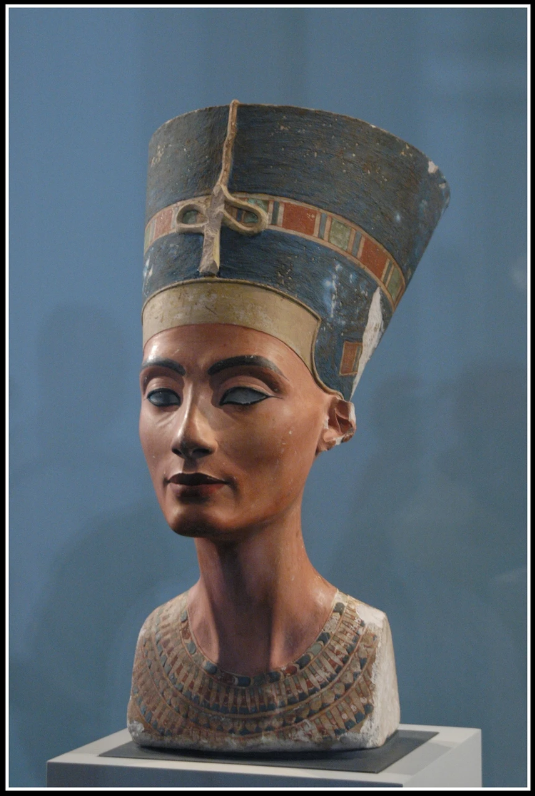The Inclusive Beauty of the Ancient Egyptians
Bust of Nefertiti, 1345BCE; Altes Museum - Berlin
The New Kingdom Era of Ancient Egypt (1570 BCE - 1069 BCE), is a very well-documented time in general, and the most well-documented time in Egyptian history. We know the social structure of this time resembled a pyramid. At the top was the Pharaoh, directly below were government officials, priests, and the nobility. Lower on the pyramid were soldiers, then scribes, merchants, craftsmen, and at the bottom were farmers and enslaved peoples. All classes (with the exception of the enslaved) were subject to the popular beauty standards of the time.
The ideal appearance was largely the same for men and women across class lines. Ancient Egyptians desired a slender, but muscular, frame with wide shoulders, narrow hips, and long legs. Hair removal was also popular; men were mostly clean-shaved and women were depicted as hairless in surviving artwork from the time. The ancient beauty ideal, compared to today, starkly contrasts the modern Western beauty ideal. Ancient Egyptians held the same ideal for long periods, while the modern ideal changes by the decade (waif thinness of the 90s and 00s, “slim-thick” of the 10s, etc.).
Cosmetics of Ancient Egypt, however, were much closer to what we know today; some cosmetics were available to all, and some were far too expensive/hard to source to be used widely. Due to the array of minerals and binding agents (honey, gum arabic, animal fat, oil, and water) that would have been available to the Ancient Egyptians through their bustling trade routes, most social classes could afford to use cosmetics. Readily available kohl provided protection from the sun and the “evil eye” (practice in many cultures to ward off evil spirits), acted as a bug repellent, and acted as an ancient eyeliner/smoky eye.
Kohl powder
Charcoal also provided pigment to make several cosmetics when crushed into a fine powder or mixed with binding agents. However, while these two minerals would have been readily available, lower class people would have had limited access to more expensive materials, such as malachite. Considering the color green was incredibly important to the Ancient Egpytians (it represented life, the god Osiris, and protection from evil spirits), it is clear why the expensive mineral was used frequently by the higher classes.
The Ancient Egpytians were comparatively inclusive in their beauty ideals – with a unisex body ideal and cosmetic use, and relatively few differences in which goods were available between social classes. Our modern society shares many similarities and differences with this ancient society, and it is always interesting to look to the past and see how the people lived their day to day lives as compared to us.
SOURCES
https://nhmu.utah.edu/articles/2024/03/makeup-ancient-egypt
https://www.curationist.org/editorial-features/article/hair-and-makeup-in-ancient-egypt
https://www.worldhistory.org/article/1123/social-structure-in-ancient-egypt/
https://www.worldhistory.org/New_Kingdom_of_Egypt/
About the Author
Athena Garay is a recent university graduate with a deep interest in history, sociology, English, and writing. She has a lifelong interest in people's history as well as the bigger figures and movements.



